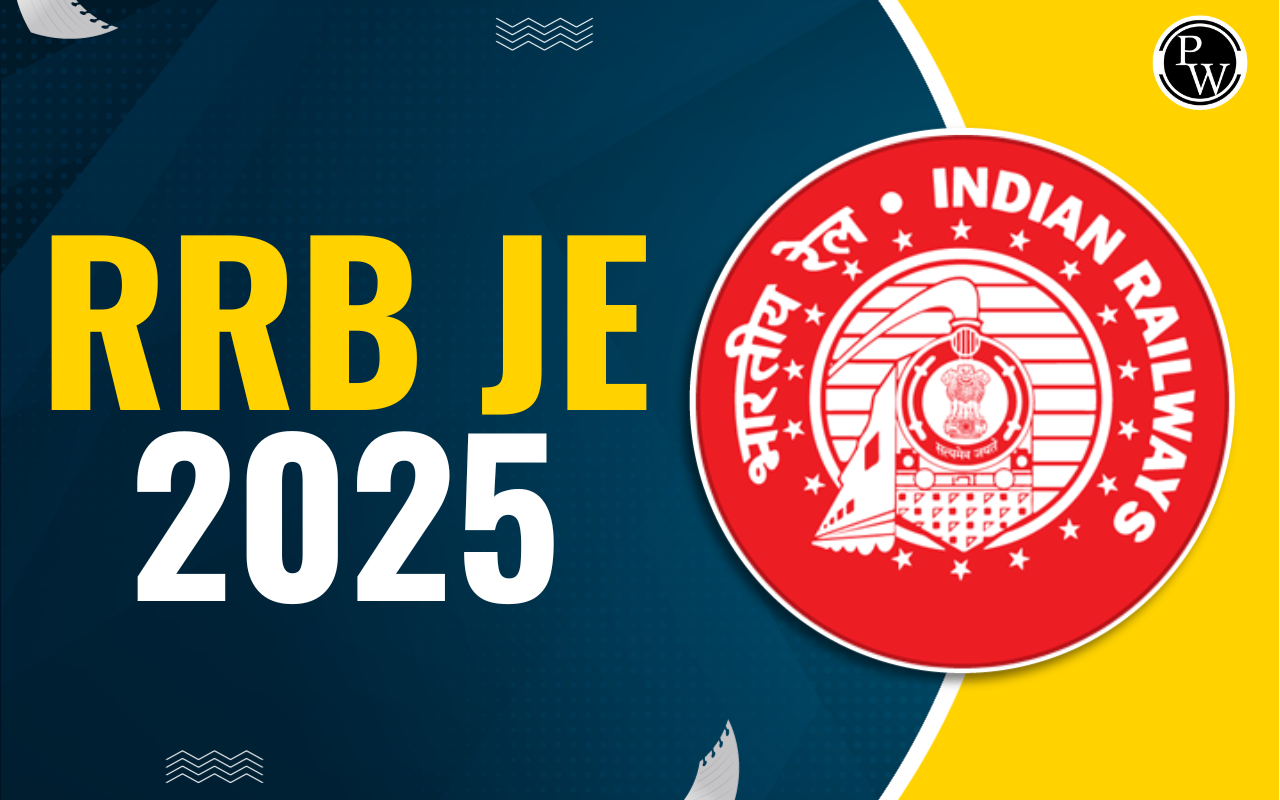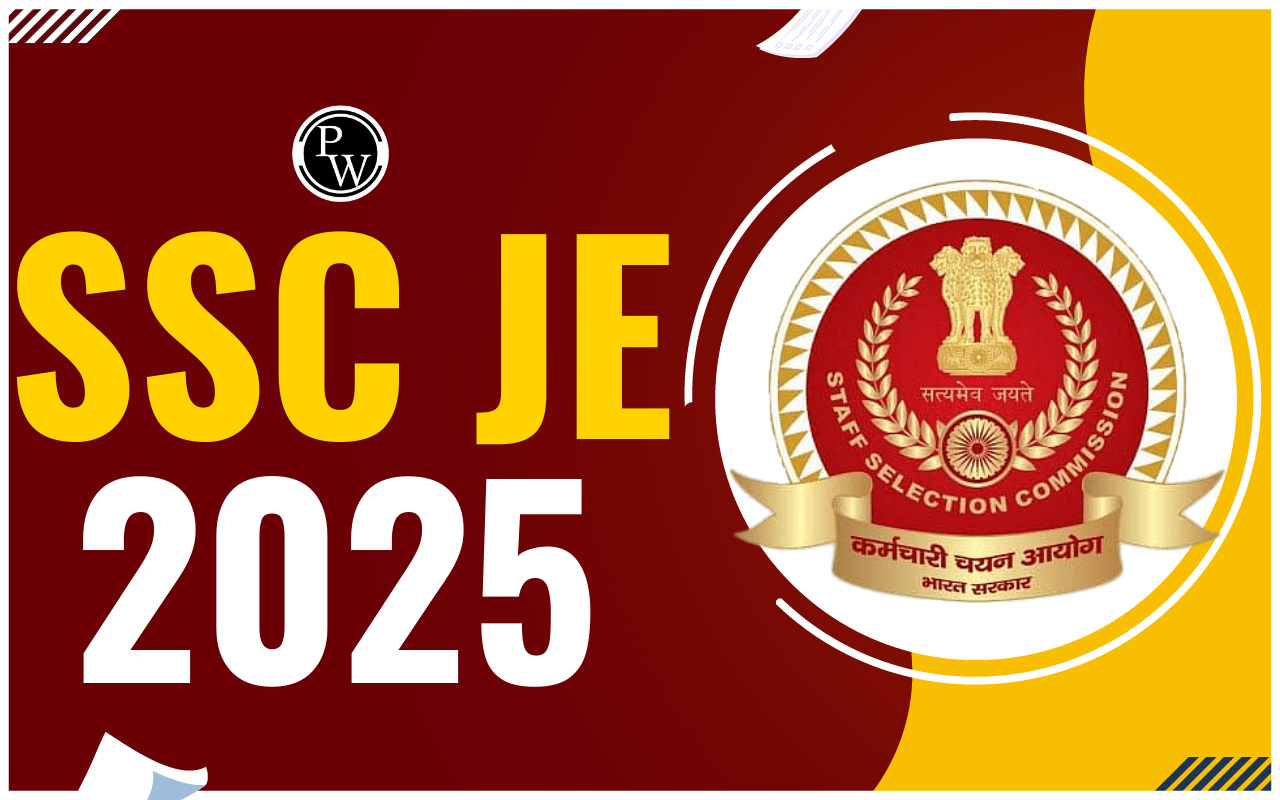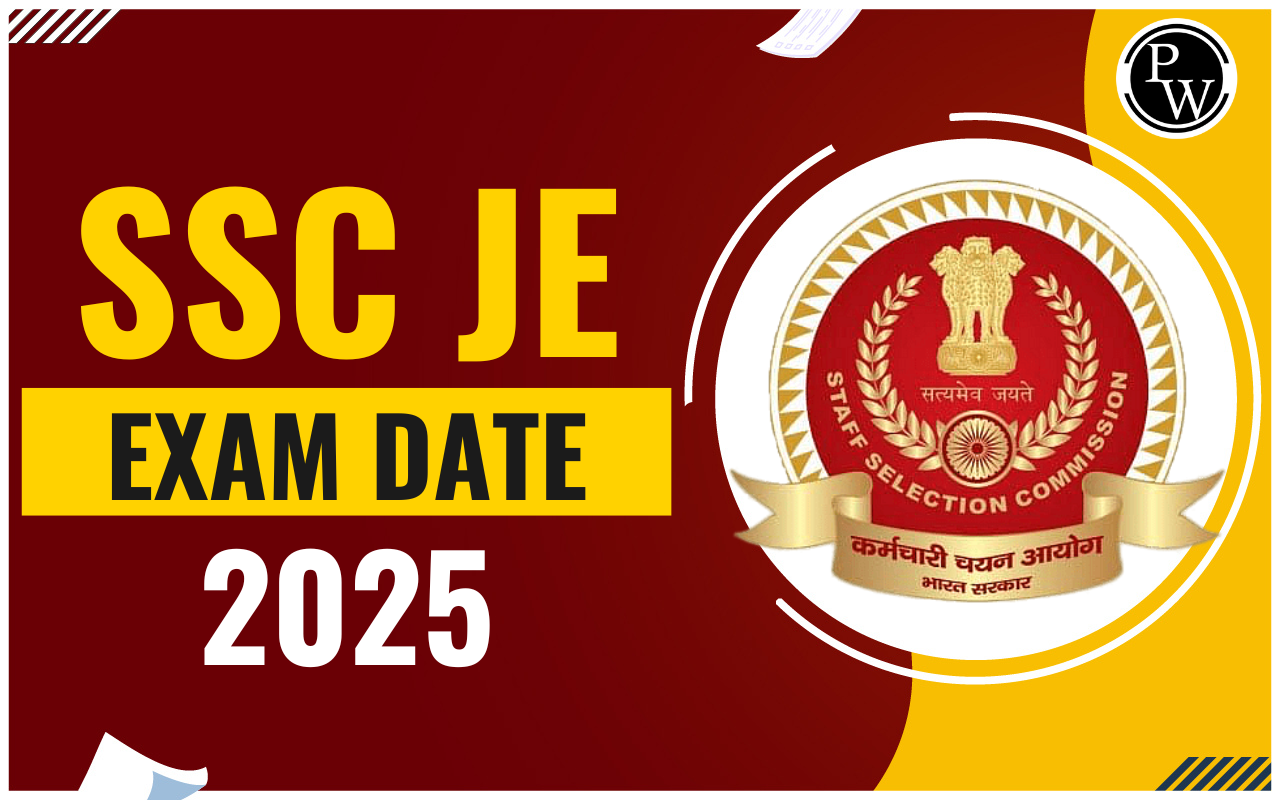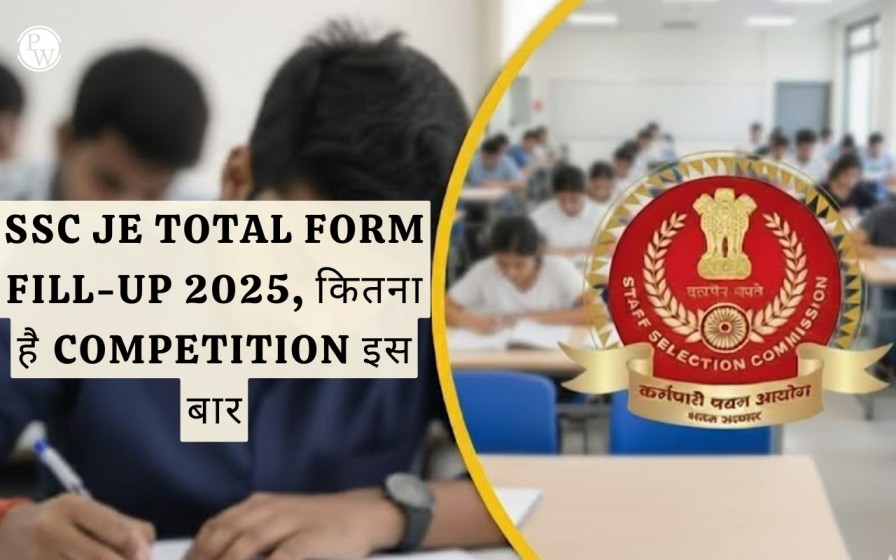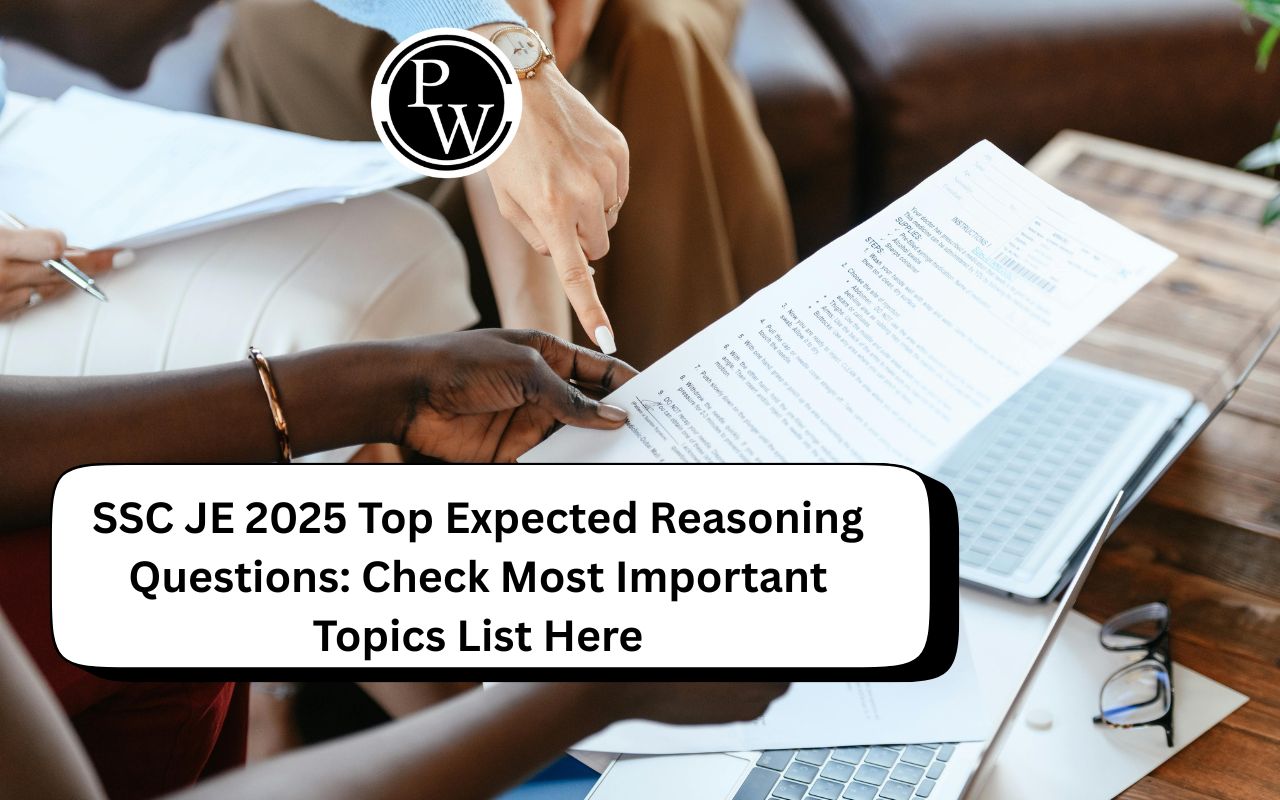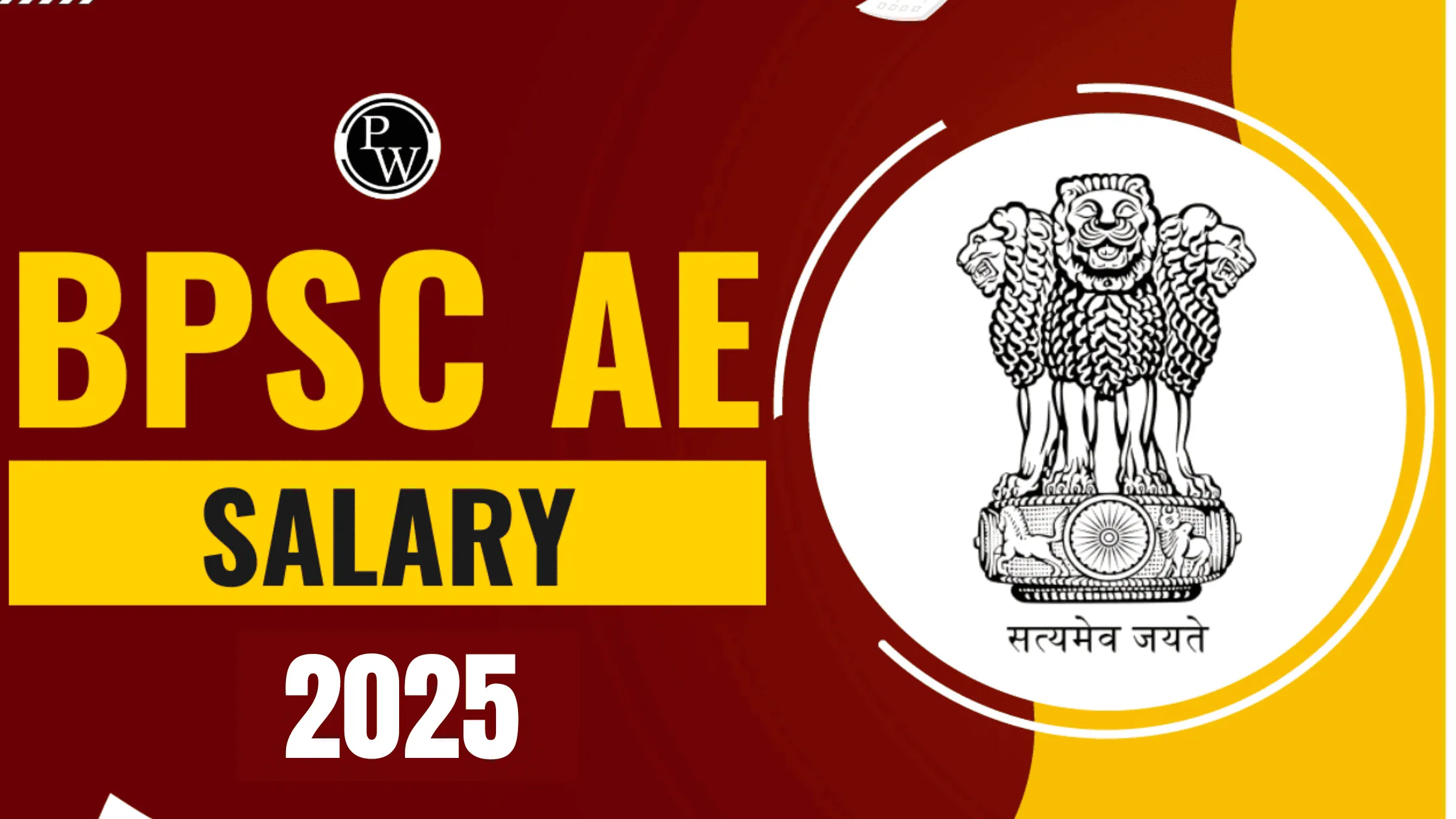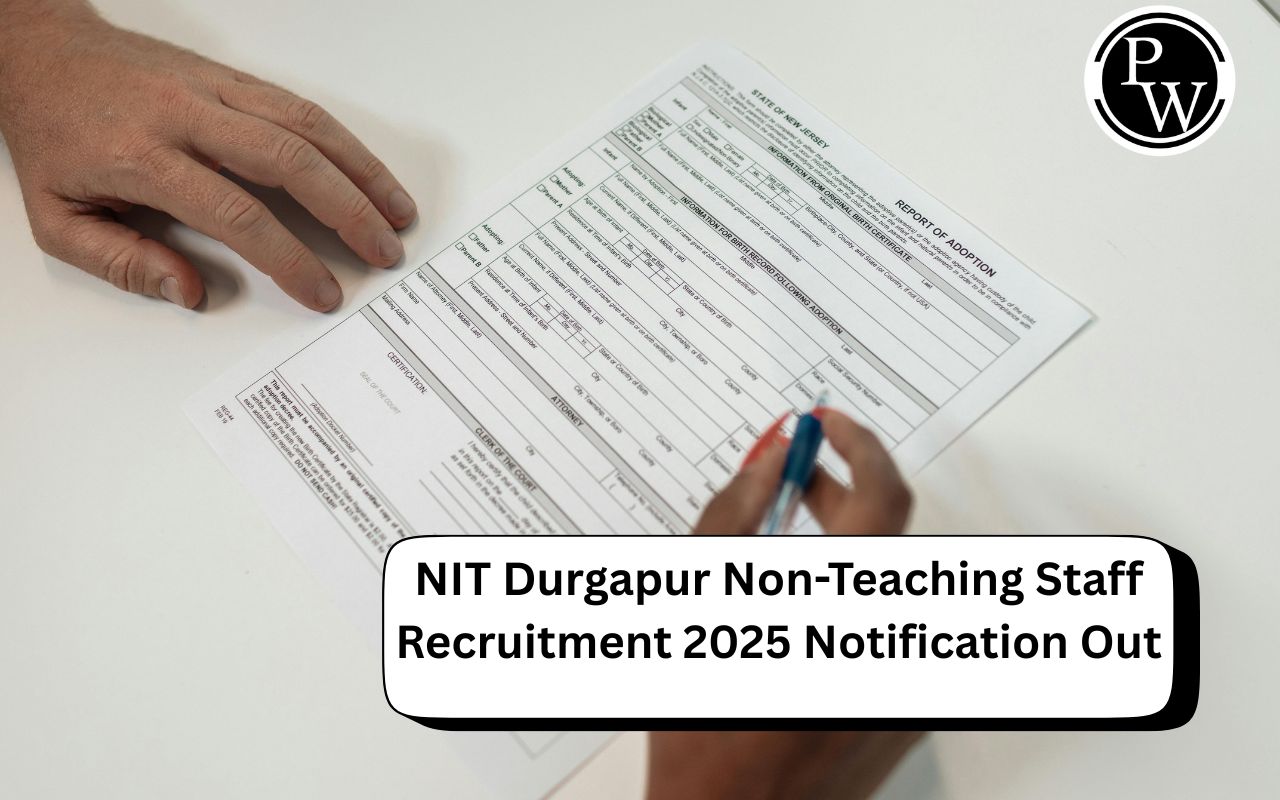
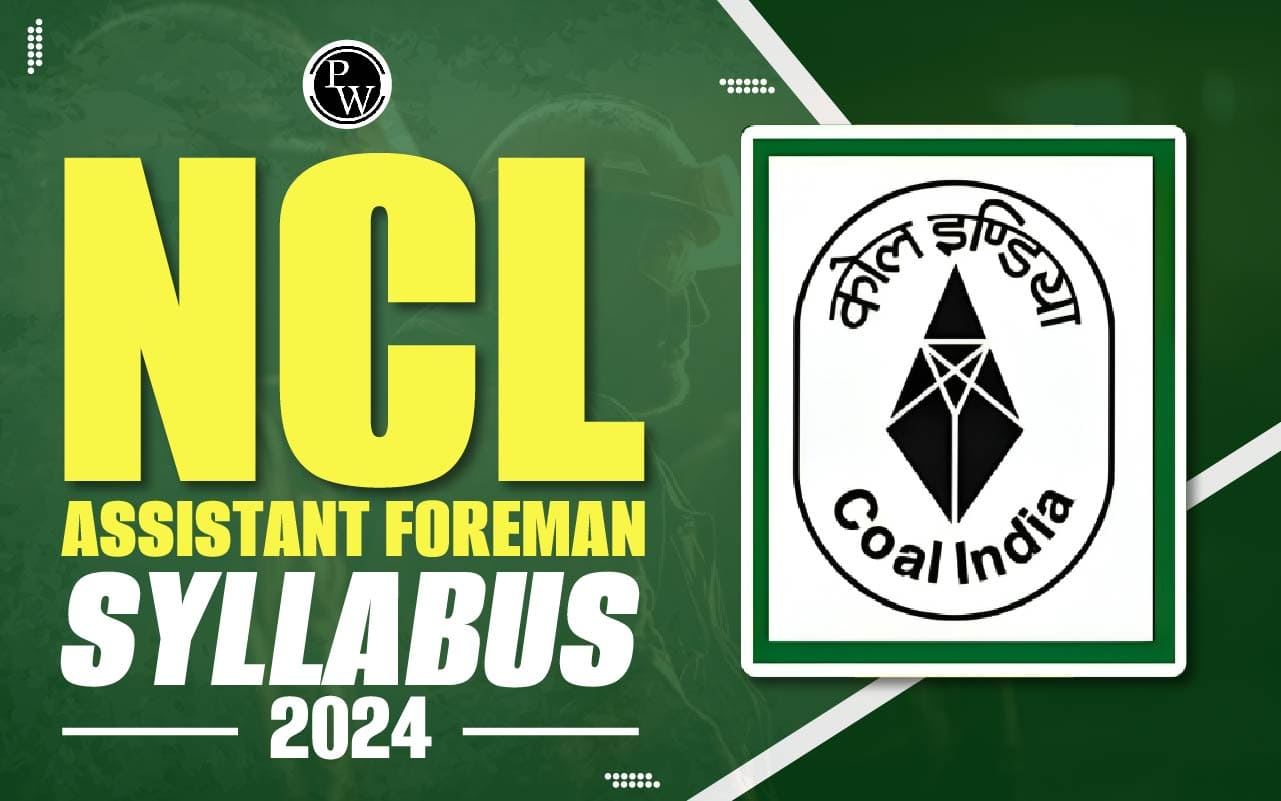
NCL Assistant Foreman Syllabus 2024: Northern Coalfields Limited inviting online applications from eligible aspirants for filling 150 positions under different disciplines. Candidates who have registered for NCL Recruitment 2024 must have a thorough understanding of the syllabus for computer-based test. The selection of applicants will be done on the basis of their performance in the written test. So, to gear up the preparation of aspirants, we have mentioned the NCL Assistant Foreman Syllabus 2024 along with the exam pattern in this article.
NCL Syllabus 2024
The authorities of Northern Coalfields Limited have unveiled the NCL Syllabus 2024 for Assistant Foreman under NCL Notification 2024 PDF. Candidates who are going to participate in the computer-based exam must be well familiar with the syllabus and exam pattern to plan their preparation to secure their success by achieving highest marks. Candidates can find the topic-wise NCL Syllabus 2024 to boost their preparation for the forthcoming examination.
NCL Assistant Foreman Syllabus 2024 Overview
A proper understanding of syllabus plays a vital role to ace the examination with a good score. Candidates must check out the detailed NCL Assistant Foreman Syllabus 2024 to initiate their preparation accordingly. The key highlights of NCL Syllabus 2024 are tabulated below for your reference:
| NCL Syllabus 2024 Overview | |
| Organization | Northern Coalfields Limited |
| Post Name | Assistant Foreman (Grade C) |
| Vacancies | 150 |
| Advt. No. | NCL/HQ/PD/Manpower/DR/2023-24/22 |
| Category | Engg Jobs |
| Apply Online Begins | 15 January 2024 |
| Last Date to Apply | 5 February 2024 |
| Exam Mode | Online |
| Job Location | Madhya Pradesh & Uttar Pradesh |
| Selection Process | CBT Test |
| NCL Syllabus 2024 | Available Now |
| NCL Recruitment 2024 Official Website | www.nclcil.in |
NCL Assistant Foreman Syllabus 2024
As per the official notification, we have explained the NCL Assistant Foreman Syllabus 2024 for all the sections. Aspirants are advised to go through the complete syllabus to make their preparation effective:
NCL Syllabus 2024 for E & T
The subject-wise syllabus for NCL Assistant Foreman (E&T) Gr-C is mentioned below:
- Network Theory - Basic of Network Theory. Nodal and Mesh analysis. Network Theorems- Superposition Theorem, Thevenin and Norton's Theorem, maximum power transfer Theorem. Star-Delta transformation, Duality. Steady state sinusoidal analysis, Time domain analysis of simple linear circuits, Frequency domain analysis of RLC (Series and Parallel) circuits. Two port network parameters. Graph Theory.
- Digital Electronics - Number systems, Code converters: BCD, Binary, IIEX, Octal other codes, Combinatorial Circuits. Boolean algebra. Karnaugh map. CMOS implementations. Arithmetic Circuits. Multiplexers. Encoder & Decoders. Sequential circuits- latches and all flip-flops, counters, shift-registers. Data converters- ADC (Analog to Digital Converter) and DAC (Digital to Analog Converter).
- Semiconductor Memories - ROM (Read Only Memory), SRAM (Static Read Access Memory), DRAM (Dynamic read Access Memory).
- Microprocessor (8085-8 Bit) - Architecture, All Instruction, Programming, memory.
- Signal and System - Signal Operation- Time Shifting, Scaling, & Reversal. System- Linear, causality, stability. Fourier series and Fourier transform representations, sampling theorem. Discrete-Time signals discrete-time Fourier transform, DFT (Discrete Fourier transform), FFT, and Z- transform. LTI systems- Properties, frequency response, group delay, phase delay.
- Electronic Devices Circuits - Energy bands in intrinsic and extrinsic silicon. Carrier transport- diffusion current, Drift current, Mobility and Resistivity, Diffusion constant, Generation and recombination of carriers. Diode, BJT (Bipolar Junction Transistor). P-N junction Transistor, Zener diode, MOSFET, LED (Light Emitting Diode), a photodiode and solar cell. Thyristor (SCR), Triac Diode, GTO, an IGBT, DC to DC conversion, Rectifier, Chopper.
- Analog Electronics - BJT (Bipolar Junction Transistor), and MOSFETs, Simple diode circuits- clipping, clamping, and rectifiers. BJT and MOSFET amplifiers- multi-stage, differential, feedback, power and operational, Operational Amplifier circuits, Active filters. Oscillators- criterion for oscillation, RC Phase Shift, using transistor and FET, Wein bridge, Clapp's, Colpitts oscillator only Formula. Function generators, wave-shaping circuits and 555 timers, Voltage reference circuits, Power supplies- ripple removal and regulation. Cathode Ray Oscilloscopes (CRT), Multimeters, and Digital voltmeters.
- Control Systems - Basic control system, Transfer function meson's formula, Block diagram representation, Signal flow graph. Transient and steady-state analysis of LTI systems- First and Second Order System. Frequency response- Routh-Hurwitz criterion, Polar Plot analysis, and Nyquist.
- Analog Communication System - Amplitude modulation and demodulation For Sinusoidal, Rectangular and Triangular Signal, Angle modulation(Frequency and Phase Modulation) and demodulation, AM and FM Spectrum Analysis, super heterodyne receivers.
- Digital Communications - PCM (Pulse Code Modulation), DPCM (Delta Pulse Code Modulation), digital modulation schemes. Bandwidth Calculation, SNR (Signal to Noise ratio) and BER/Probability error for digital modulation, Fundamentals of error correction, Hamming codes, Inter-symbol interference. Basics of TDMA. FDMA, and CDMA (Code-division Multiple access). Information theory- Entropy, mutual information and channel capacity theorem.
- Electromagnetics - Electrostatics, Maxwell's equations, wave equation, Poynting theorem & vector. Plane waves- Reflection and refraction, polarization, phase and, group velocity, calculation of skin depth. Transmission lines- Equations, characteristic impedance, impedance matching. impedance transformation, S-parameters, Smith chart. Waveguides- Basic of Waveguides.
- Antennas - Basic Concept, Definition, Types of Antenna, radiation pattern, gain, and directivity return loss etc.
- Computer Networking - Network features-Network topologies, protocols- TCP/IP, UDP, FTP, models, types, network components, network medias, Specification and standards, types of cables, UTP, STP, Coaxial cables. Network components like hub, Ethernet switch, router, NIC Cards, connectors, media and a firewall. Difference between PC & Server.
- Voice Communication - Telephone instruments and signals: Introduction, the subscriber loop, standard telephone set, basic call procedure, cordless telephones, electronic telephones. Telephone circuit: Introduction, the local subscriber loop, channel noise and units of power measurements. transmission parameters, voice frequency circuit arrangements. Public telephone network: Transmission system, public telephone network, automated central office switches and exchanges, telephone switching hierarchy, common channel signaling system. Multiplexing of telephone channels: TDM, digital hierarchy, digital carrier line encoding, T-carrier systems, digital carrier frame synchronization, FDM, WDM. Digital telephony: Introduction, voice digitization, TDM of PCM signals, digital carrier, Fractional T-carrier service, Data Terminal, Digital Carrier Line Encoding, Error Detection, T Carrier System, T-1 Carrier System.
NCL Syllabus 2024 for Mechanical Engineering
Candidates can check the topic-wise syllabus for NCL Assistant Foreman for Mechanical Engineering in this section:
- Theory of Machines and Machine Design - Theory of Machines and Machine Design Concept of simple machine, Four bar linkage and link motion, Flywheels and fluctuation of energy, Power transmission by belts V-belts and Flat belts, Clutches - Plate and Conical clutch, Gears - Type of gears, gear profile and gear ratio calculation, Governors - Principles and classification, Riveted joint, Cams, Bearings, Friction in collars and pivots.
- Engineering Mechanics and Strength of Materials - Equilibrium of Forces, Law of motion, Friction, Concepts of stress and strain, Elastic limit and elastic constants, Bending moments and shear force diagram, Stress in composite bars, Torsion of circular shafts, Bucking of columns - Euler's and Rankin's theories, Thin walled pressure vessels.
- Thermal Engineering Properties of Pure Substances - P-V & P-T diagrams of pure substance like H2O, Introduction of steam table concerning steam generation process; definition of saturation, wet & superheated status. Definition of dryness fraction of steam, degree of superheat of steam. H-s chart of steam (Mollier's Chart). 1st Law of Thermodynamics: Definition of stored energy & internal energy, 1st Law of Thermodynamics of cyclic process, Non Flow Energy Equation, Flow Energy & Definition of Enthalpy, Conditions for Steady State Steady Flow; Steady State Steady Flow Energy Equation. 2nd Law of Thermodynamics: Definition of Sink, Source Reservoir of Heat, Heat Engine, Heat Pump & Refrigerator; Thermal Efficiency of Heat Engines & co-efficient of performance of Refrigerators, Kelvin Planck & Clausius Statements of 2nd Law of Thermodynamics, Absolute or Thermodynamic Scale of temperature, Clausius Integral, Entropy, Entropy change calculation of ideal gas processes. Carnot Cycle & Carnot Efficiency, PMM-2; definition & its impossibility.
- Air standard Cycles for IC Engines - Otto cycle; plot on P-V, T-S Planes; Thermal Efficiency. Diesel Cycle; Plot on P-V, T-S planes; Thermal efficiency. IC Engine Performance, IC Engine Combustion, IC Engine Cooling & Lubrication. Rankine cycle of steam: Simple Rankine cycle plot on P-V, T-S, h-s planes, Rankine cycle efficiency with & without pump work.
- Boilers - Boilers; Classification; Specification; Fittings & Accessories : Fire Tube & Water Tube Boilers. Air Compressors & their cycles; Refrigeration cycles; Principle of a Refrigeraton Plant; Nozzles & Steam Turbines.
- Fluid Mechanics & Machinery Properties & Classification of Fluid - Ideal & real fluids, Newton's law of viscosity, Newtonian and Non-Newtonian fluids, compressible and incompressible fluids. Fluid Statics Pressure at a point. Measurement of Fluid Pressure: Manometers, U-tube, Inclined tube. Fluid Kinematics: Stream line, laminar & turbulent. flow, external & internal flow, and continuity equation. Dynamics of ideal fluids: Bernoulli's equation, Total head; Velocity head; Pressure head; Application of Bernoulli's equitation. Measurement of Flow rate Basic Principles: Venturimeter, Pilot tube, Orifice meter. Hydraulic Turbines Classifications, Principles. Centrifugal Pumps Classifications, Principles, Performance.
- Foundry & Casting methods, defects, different casting processes, Forging, Extrusion, etc., Metal cutting principles, cutting tools, Basic Principles of machining with (i) Lathe (ii) Milling (iii) Drilling (iv) Shaping (v) Grinding, Machines, tools & manufacturing processes, etc. as per the courses offered by the Recognized Institutes.
NCL Syllabus 2024 for Electrical Engineering
The NCL Syllabus 2024 for Electrical Engineering is explained in this section:
Electricity Theory (Elementary Knowledge)
The electricity theory includes the various topics as mentioned here:- Principles of Electricity - Electric voltage, Current and resistance, Ohm's law - specific resistance, Laws of resistance and their application for calculating voltage drop, series and parallel circuits, Practical units of voltage, current, resistance, power and energy. Relation between electrical power unit (KW) and Mechanical Power Units (HP).
- Electro Magnetism - Concept of Electro Magnetic Force (EMF), production of E.M.F., Flemings Right and Left Hand Rules, Magnetic, Chemical and heating effects of electric current. Magnetic properties of material, Electromagnets and their various applications.
- Materials - Conductors, Semiconductors and insulator materials and their relative merits. Transformer oil, Effect of heat and moisture on insulation. Lubricants and their uses. Different types of wires, cables, switches, circuit breakers, cutouts, etc.
- Generation of Electricity - Sources of natural energy. Renewable and Non-Renewable source methods of production of electricity both Alternating Current and Direct Current.
- A.C. Generators (Alternators) - Essential components and constructional features. Methods of voltage and frequency control conditions and methods for synchronizing, simply associated switchboard and its accessories.
- D.C. Generators - Essential components and constructional features, Shunt, series and compound dynamos and their characteristics, causes for sparking. Commutators and their maintenance. Carbon brushes, their adjustment and care. Methods of voltage regulation. Conditions for parallel operation, simple associated switch board and its accessories.
- Batteries - Primary cells, Dry cells, Lead acid cells, Nickel, Iron or Alkaline cells. Initial and subsequent charging of batteries. Charging circuits and their calculations. Series and parallel circuits. Maintenance of batteries. Use of Hydrometers.
- A.C. Motors - Theory of induction (squirrel cage and slip-ring type) synchronous and commutator motors, their uses, installation, method of starting, speed control and reversal of direction.
- D.C. Motors - Theory of series, shut and compound wound type motors, their uses, installation, method of starting, speed control and reversal of direction.
- A.C. Circuits - Knowledge of vectors. Phase and phase difference. Resistance, inductance and capacitance in an A.C Circuit. Periodicity or Frequency. Power and power factor. Single phase and three phase systems, star and delta connections, Phase Sequence.
- Controlling and Regulating Gear - Knowledge of various types of switches, circuit breakers, cutouts, starters, regulators and protective devices for both A.C. and D.C. motors and their wiring with the motors.
- Transformation - Knowledge of single phase and three-phase transformers, their construction, use and maintenance. Phasing out, parallel working, auto transformer, transformer tappings, temperature rise, instrument transformer.
Transmission and Distribution
This section includes various topics and units as explained here:- Overhead Lines - Simple calculations and general principles of construction of low, medium and high voltage lines. Size of conductors, length of spans, sag, strength of poles, spacing of conductor, cross arms, effect of temperature. wind pressure, ice and snow, tension on wire. Insulators, brackets, stays, struts, guard wires and other protective devices. Earthing, lighting arrestors, lighting conductors and their testing and fault location.
- Underground Cables - underground cables, simple calculations and general principles of laying cables direct in ground, in troughs and pipes. Handling, bending, jointing, plumbing. Underground and above ground junction boxes. Distribution board, Joint box compound, melting of the compound and filling boxes with compound. Testing and fault location.
- Illumination - Metal filament lamps, fluorescent lamp circuits, Photometric units and simple measurements. General requirements of efficient lighting and elementary calculations. Street lighting. Time switches.
Generation
a) DC and AC power supply for auxiliaries, arrangement of unit auxiliary and station service boards, station lighting and automatic changeover. Station batteries and charging methods. Stand by and emergency power and lighting systems.
b) Testing & Measurement - Working principle and basis of instrument and measurements. Details of measuring instruments for pressure, flow, temperature, level, alignment and current, voltage, power, reactive power, frequency, energy, winding temperature, auto controllers, recorder, insulation, tester, its use for primary detection of faults, data acquisition system, digital distributed control, UPS etc. Testing of electrical and mechanical equipment.
c) Control & Protection - Sequential operation & interlocks, general machine start/stop, sequence of operation.
It also includes Electricity Utilization for domestic and industrial installation & Safety Rules.
NCL Syllabus 2024 for Section B
The Section B for NCL Exam 2024 includes the General Knowledge, General Awareness, Reasoning and Quantitative Aptitude for which the prescribed syllabus mentioned here:
- General Knowledge - About India and its international relations, General Science, History, Polity, Economics, Geography, etc.
- General Awareness - About Sports, Defence, Books, Prizes, About Indian democracy, Current Affairs, etc.
- Reasoning, Verbal and Mental Ability - Synonym & Antonym (Hindi/English), Grammar, Relationship, Coding-Decoding, Decision Making, Series, Seating Arrangement, Clock and Calendar, Non Verbal Reasoning, etc.
- Quantitative Aptitude - Work relationship, Profit & Loss, Speed, Ratio and Proportion, Average, Percentage, Simple and Compound Interest, Algebra, Trigonometry, Geometry, Statistics, etc.
NCL Assistant Foreman Syllabus 2024 PDF
The officials of Northern Coalfields Limited uploaded the NCL Assistant Foreman Syllabus 2024 PDF @nclcil.in. Candidates must download the NCL Syllabus 2024 PDF and go through the complete syllabus to understand the difficulty and weightage of the topics. We have provided a direct link to access the Northern Coalfields Limited Syllabus 2024 in PDF format here.
NCL Assistant Foreman Syllabus 2024 PDF
NCL Assistant Foreman Exam Pattern 2024
Candidates who are appearing for the NCL Exam 2024 for Assistant Foreman positions must have a proper understanding of the exam pattern. The NCL Assistant Foreman Exam Pattern will include the complete format of the question paper including number of questions, marking scheme, exam duration, etc. Here, the NCL Assistant Foreman Exam Pattern 2024 is mentioned in the below section for the sake of the ease of aspirants:
- The paper will consist of a total of 100 multiple-choice questions.
- The question paper will include two sections i.e. Section A for Technical Knowledge (Discipline Related) and Section B for General Aptitude subjects.
- Each question will be awarded 1 mark for correct answers.
- There will be no negative marking for wrong attempts.
- The question paper will be bilingual ( English and Hindi ) only.
- The time duration to attempt the paper will be 90 minutes.
| NCL Assistant Foreman Exam Pattern 2024 | |||
| Part | Subject | No. of Questions | Duration |
| Section ‘A’ | Technical Knowledge (Discipline Related) | 70 | 90 Minutes |
| Section ‘B’ | General Knowledge, General Awareness, Reasoning, Verbal & Mental Ability and Quantitative Aptitude. | 30 | |
| Total | 100 | ||
NCL Assistant Foreman Syllabus 2024 FAQs
Q. Where can I get the NCL Assistant Foreman Syllabus 2024?
Q. How to download NCL Syllabus 2024 PDF?
Q. How many questions will be asked for NCL Assistant Foreman Exam 2024?
Q. Is there a negative marking in the NCL Exam 2024?
Q. How can I prepare for NCL Assistant Foreman Exam 2024?

